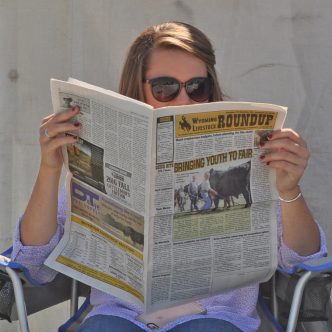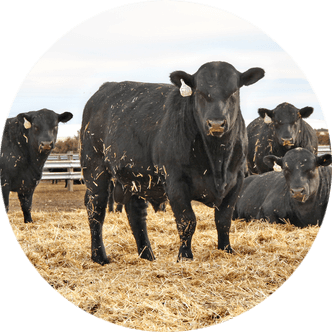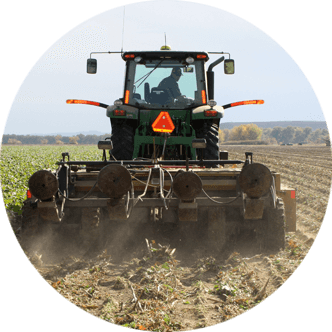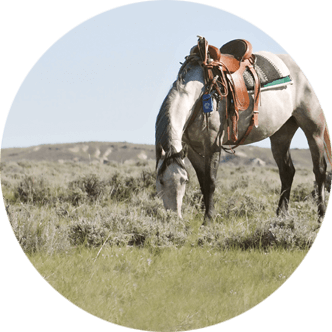Cowboy Bulls: Lucky 7 Angus raises proven feed-efficient cattle
Jim and Jamie Jensen are on a mission to raise and sell quality Black Angus cattle while spreading the word about sustainable agriculture through their seedstock operation, Lucky 7 Angus. For the Jensens, sustainability means making sure people eat while keeping ranching profitable.
A five-generation ranching operation, Lucky 7 Angus produces hardy, feed-efficient cattle and “cowboy bulls” able to withstand tough environmental conditions with minimal input.
According to Jim, Lucky 7’s mission is to “keep the mom-and-pop rancher in business” by selling cattle that are more profitable, durable, healthier and capable of producing more pounds of beef per ranch.
These cattle also change the narrative about sustainability and public image when it comes to the cattle industry.
History of Lucky 7
The story of Lucky 7 Angus dates back to 1895 when James Jensen immigrated to Boulder from Denmark.
Jensen spent his first winter in America shoveling snow off the grass to feed his seven cows and three horses in what is known today as the “Nation’s Icebox.”
In the years since, the Jensens have continued to prioritize hard work and perseverance in raising cattle in the same tough conditions. The program has developed into a profitable seedstock company.
Today, Lucky 7 Angus has over 2,000 head of registered Black Angus cattle spread out across three separate locations in Boulder, Riverton and Oklahoma.
Jim and Jamie oversee operations in Boulder with the help of their five children, while the Riverton farm is managed by Steve and Delayne Stadjuhar.
Operations and clientele
As one of the largest seedstock producers in the U.S., Lucky 7 Angus sends cattle all across the nation. Clientele is largely concentrated in Wyoming, South Dakota, Nebraska, Colorado and Idaho, according to Jim.
“Our client base is basically the real commercial cattlemen – the ones who are out there trying to make a living and know the difference between a good one and a bad one,” says Jim.
Lucky 7 Angus cattle are “proven to work for ranchers in the real world” through a variety of real-world and scientific tests. Lucky 7 Angus conducts rigorous pulmonary arterial pressure testing at elevations above 7,200 feet, with a minimum of 100 days exposure.
They also track respiratory disease rates and other potential stressors in order to maintain a healthy, genetically-strong herd.
“Because of these tests and management practices, we actually have cattle that live longer, live healthier, produce longer and are dominant everywhere they go,” Jim says. “Taking care of business is the reason we do every one of the tests we do. Our number one priority is to make our customers money.”
Lucky 7’s annual bull sale is held at Riverton Livestock Auction on the first Saturday in March. Bulls are also sold over the internet, and Jim says clientele in person and online can buy with confidence, knowing quality is backed by proven genetics which have led Lucky 7 Angus to offer a unique four-year guarantee.
Focus on feed efficiency
The Lucky 7 Angus website defines feed efficiency as “the ability to either maintain or gain body weight on less feed than another animal in the same environment” and explains a properly executed feed efficiency program is about producing more pounds of beef with less input costs.
“Feed efficiency is like an economy car,” Jim explains. “Through our techniques, we’ve changed the engine in these cattle so they eat less grass to produce the same amount of beef.”
Jim says this method leads to wins for the producer and the environment.
“Once you start looking at feed efficiency and longevity, it mirrors cattle that would be considered more environmentally friendly to the city folks,” Jim says. “If we’re producing more pounds of beef with less grass, then more ranchers are putting more money in their pockets, and we’re producing less methane per pound of beef as well.”
In 2009, the Jensens became one of the first seedstock producers in the U.S. to install a GrowSafe feed intake monitoring system. Since then, Lucky 7 Angus has continued to invest in cutting-edge data collection systems to advance their program and keep them at the forefront of the industry.
“If you put all of these things together, every one of them equals more money for the rancher and less greenhouse gases per pound of beef,” Jim says.
Changing the narrative
In addition to raising quality cattle, the Jensens are on a mission to change the negative narrative surrounding agriculture and the environment.
“We’re working on telling the whole wide world agriculture and cattle ranchers are not the problem – they’re the solution,” Jim says.
In 2024, Jim shared the benefits of feed-efficient cattle during an international speaking tour in the United Kingdom. Their story is also the focus of a four-part documentary called “Lucky 7 Angus: An Art of a Cowboy Story” which is available on Amazon Prime and ExploreFlix.
“Agriculture is the only industry on Earth that is absolutely essential for human survival,” Jim emphasizes. “If we want to stay alive, we need to invest in agriculture.”
Investing in agriculture is exactly what Lucky 7 Angus continues to do – in Wyoming and beyond.
For more information on Lucky 7 Angus, visit lucky7angus.com/ or e-mail cowboybulls@hotmail.com.
Grace Skavdahl is the editor of the Wyoming Livestock Roundup. Send comments on this article to roundup@wylr.net.





